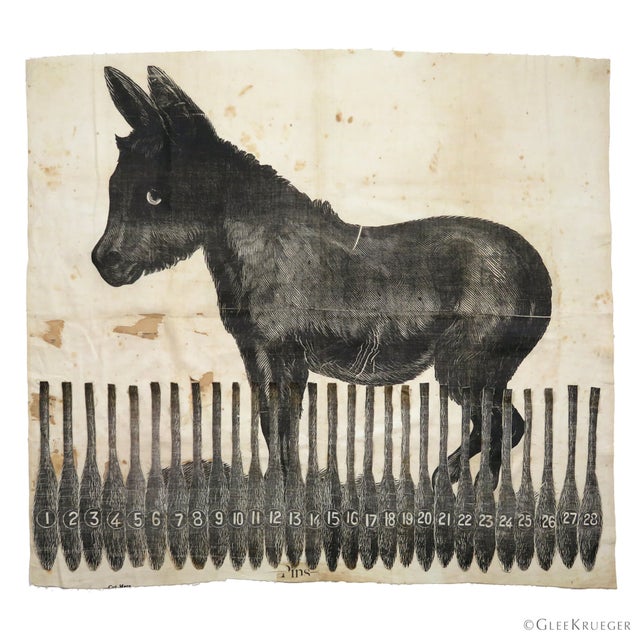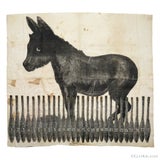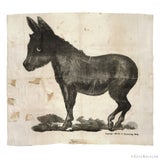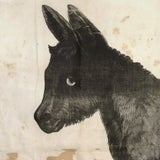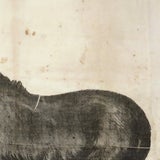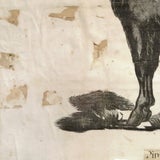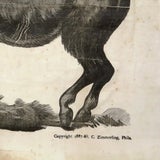- Ephemera
- >
- 1887 Charles Zimmerling Pin-The-Tail-On-The-Donkey Party Game Printed Cotton
1887 Charles Zimmerling Pin-The-Tail-On-The-Donkey Party Game Printed Cotton
In 1887, Charles Zimmerling of Philadelphia designed and patented the first Donkey Party game. Printed on cotton, each numbered tail would be cut out by hand by the players.
This version is the FIRST edition of Zimmerling's two designs that he manufactured between 1887 - 1889. Original title on bottom was "Pin-For-Tails".
Copyright 1887-88. C. Zimmerling, Phila.
By 1888, other manufacturers began printing the game on paper.
DATE
1887-88
SIZE
35.5" x 32"
CONDITION
Foxing to cotton ground. Paper residue from original applied instructions.
Complete set of tails.
HISTORY of Pin the Tail on the Donkey from THE VICTORIAN HISTORIAN:
On December 27, 1886, The Sun, a New York newspaper, reported on the game and its rules:
“Donkey parties are going to be still more numerous during the coming season, and besides the usual participants will require the faithful representation of Asinus and, what is equally important, an unlimited supply of tails. Many crude and ill formed resemblances of the donkey have been made to serve the purpose of having some fun. It is much better to procure a properly drawn donkey and all of his needed appendages. The inventor of this game is C. Zimmerling, of Philadelphia, and he has published a sheet on which the donkey and numerous tails are depicted. All that is necessary is to cut out the figures and they are then ready for use, following out the printed directions which the manufacturer supplies. This game is a very enjoyable indoor pastime, and for a jolly company is one of the best things desired for a winter evening’s amusement.”
